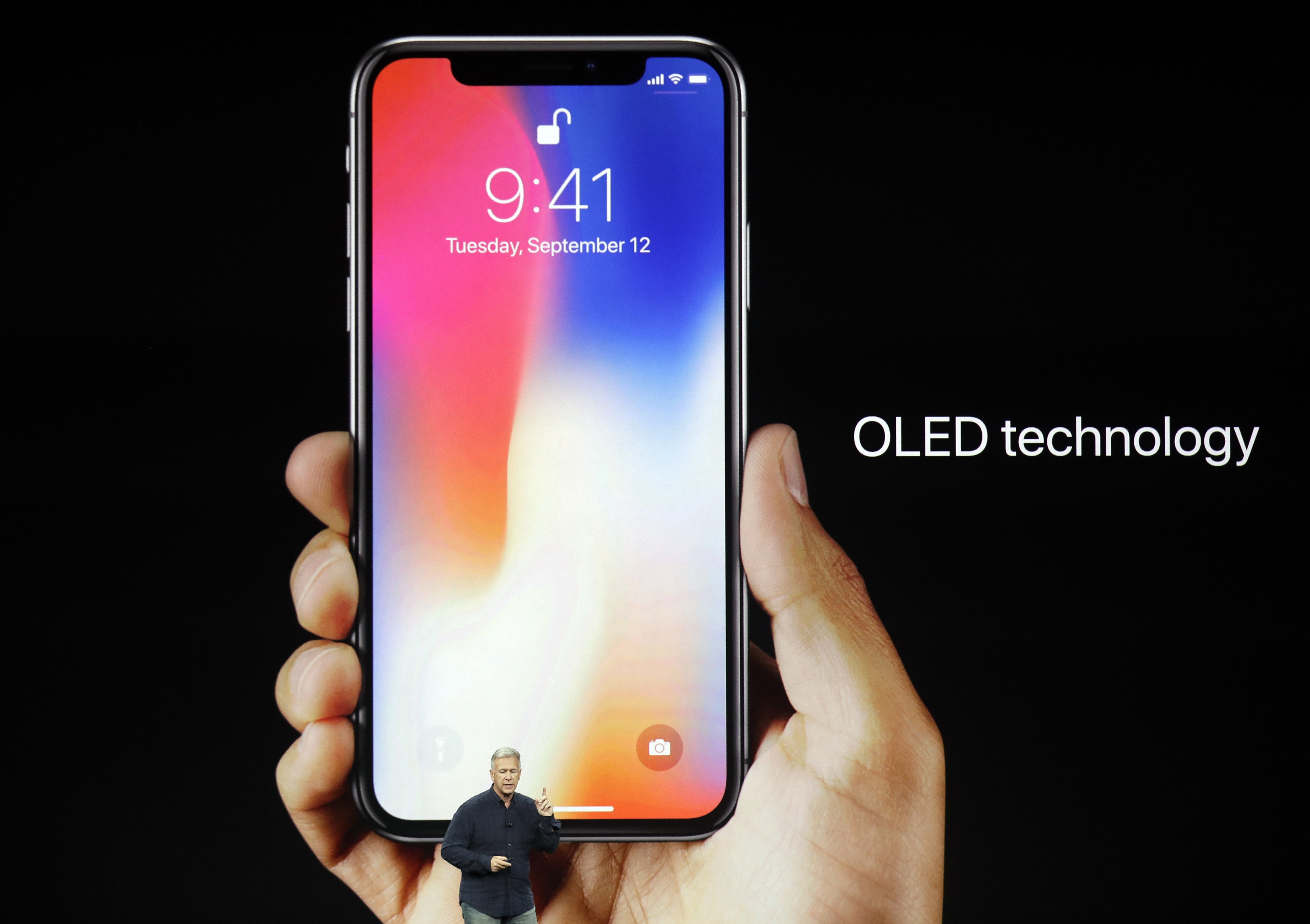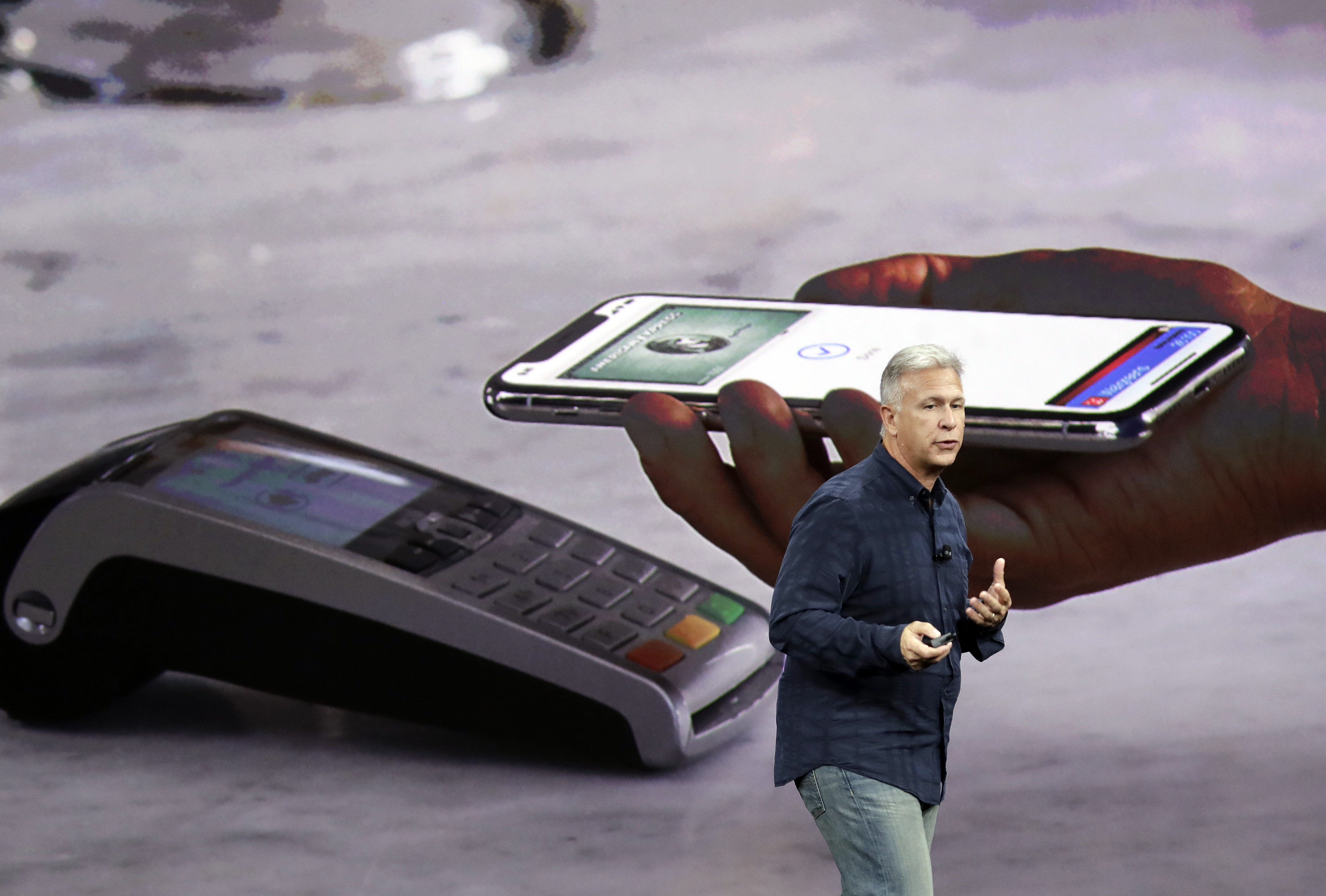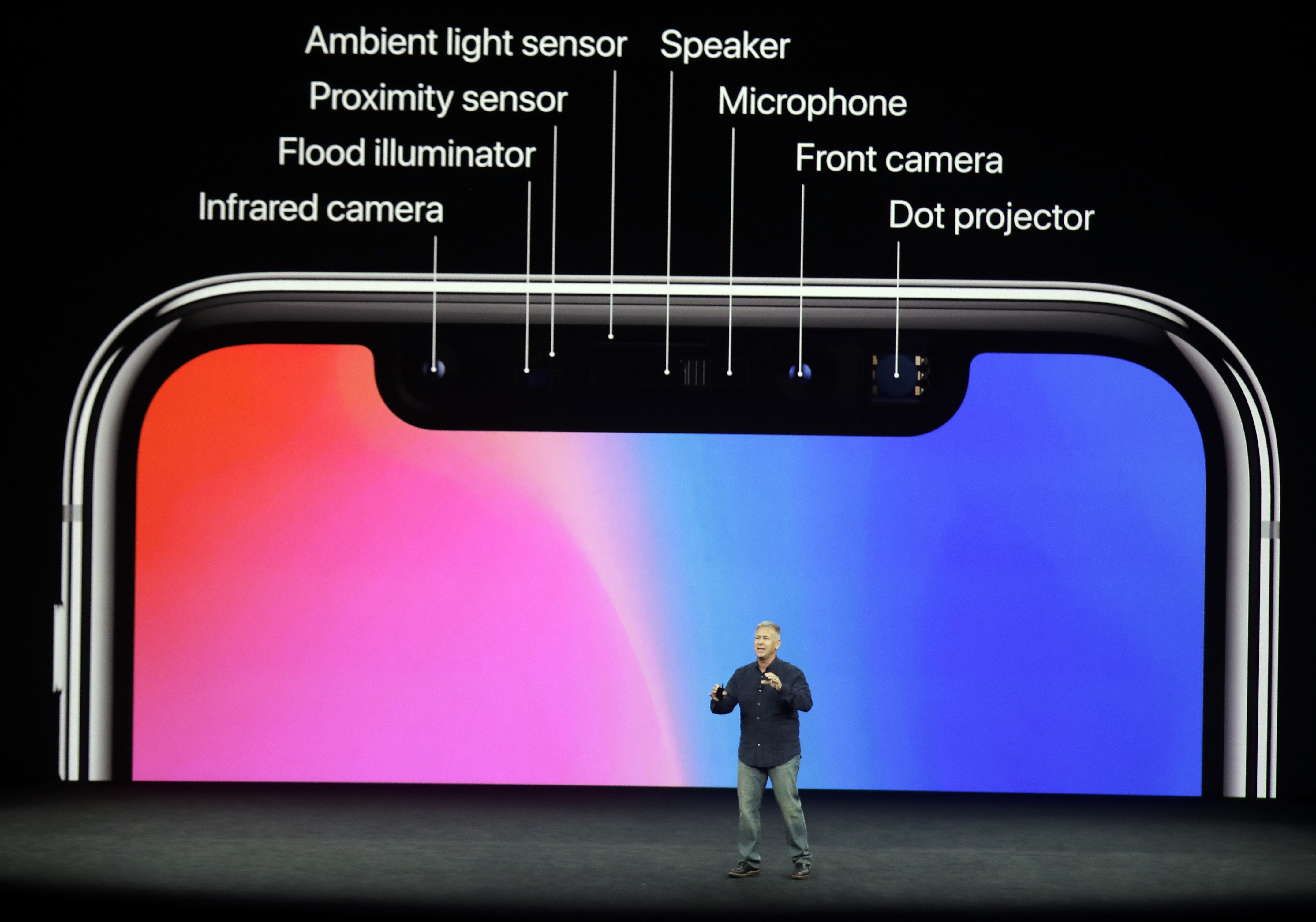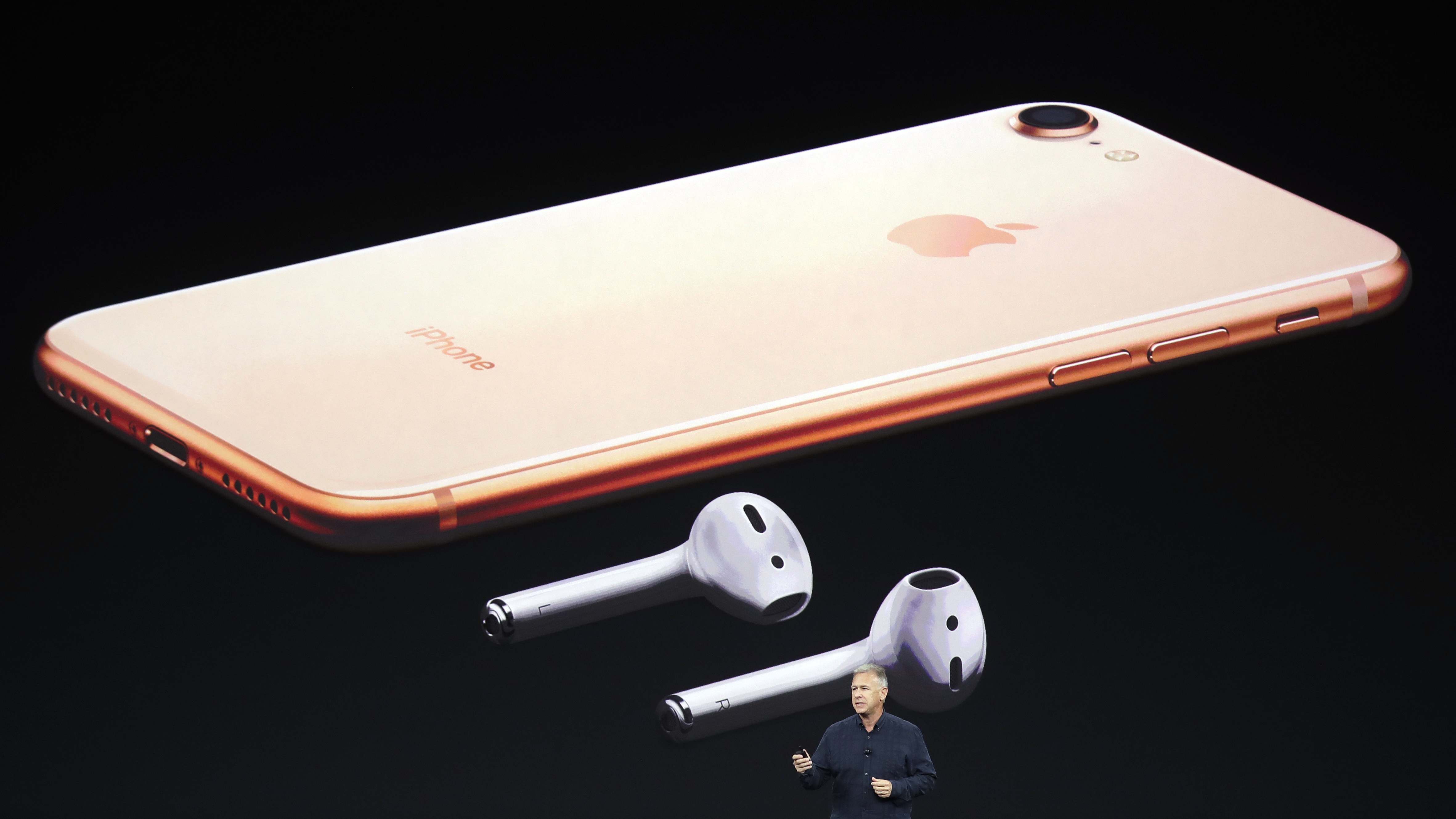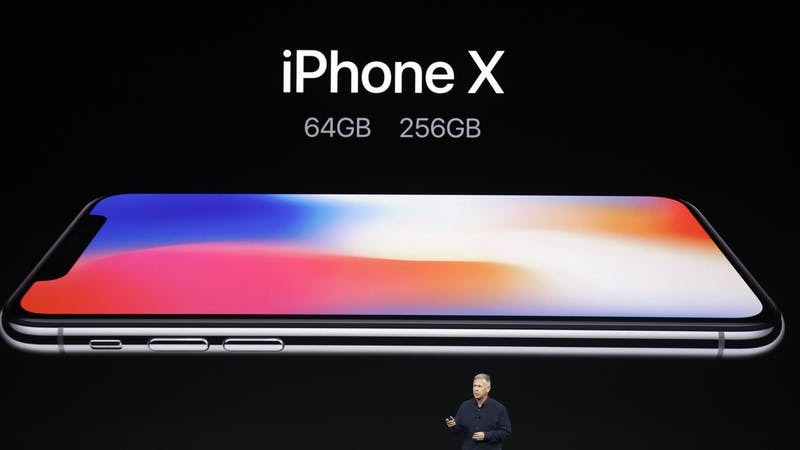
APPLE has released three new iPhones at its launch event in California.
Boss Tim Cook used Steve Jobs’s favoured “one more thing” line to announce the widely rumoured special edition smartphone, the iPhone X – a device to mark 10 years of the iPhone.
The Apple boss called the new device the “future of the iPhone”, and announced it will feature new facial recognition technology called Face ID.
It will be the most expensive iPhone ever, with the 64GB model costing £999 and going on sale on November 3. The 256GB will cost £1,149.
The software uses infrared sensors among others to build a dot pattern and recognise a user’s face through machine learning techniques. Apple says it can even recognise users in the dark.
As well as being used to unlock the device, Face ID technology can also be used to create Animoji – animated emoji controlled by the user’s face.
The larger screen, which fills the front of the device and replaces the traditional home button, also uses OLED screen technology for the first time.
The Super Retina display screen is now swiped upwards to unlock, with swipes also used to close apps now the home button is gone.
Apple’s Phil Schiller also revealed the dual rear cameras on the X will be 12 megapixels and both will carry optical image stabilisation for the first time.
The front-facing camera now carries Portrait mode and Portrait Lighting technology for the first time, which the firm says will enable users to take better selfies.
The new iPhone 8 and 8 Plus were also announced, with Mr Cook calling the phones a “huge step forward” for the device.
The two new phones will feature glass on the front and rear of the device for the first time, which has been specially sealed to make the 8 and 8 Plus dust and water-resistant.
The 12 megapixel camera on the iPhone 8 Plus also comes with a new photo mode called Portrait Lighting which can be used to add extra lighting to portrait photos.
The iPhone 8 and 8 Plus will also be capable of wireless charging for the first time.
The technology giant said the 8 and 8 Plus are also the first smartphones to have been designed for augmented reality (AR).
The technology mixes real and virtual images on a single screen.
Apple announced a developer kit for the technology earlier this year called ARKit and said this technology has been built into the hardware and software of the new devices.
The tech giant confirmed pre-orders for the two new phones will begin on September 15 and they will go on sale in the UK on September 22.
The iPhone 8 will cost £699, and the iPhone 8 Plus £799.

Enjoy the convenience of having The Sunday Post delivered as a digital ePaper straight to your smartphone, tablet or computer.
Subscribe for only £5.49 a month and enjoy all the benefits of the printed paper as a digital replica.
Subscribe